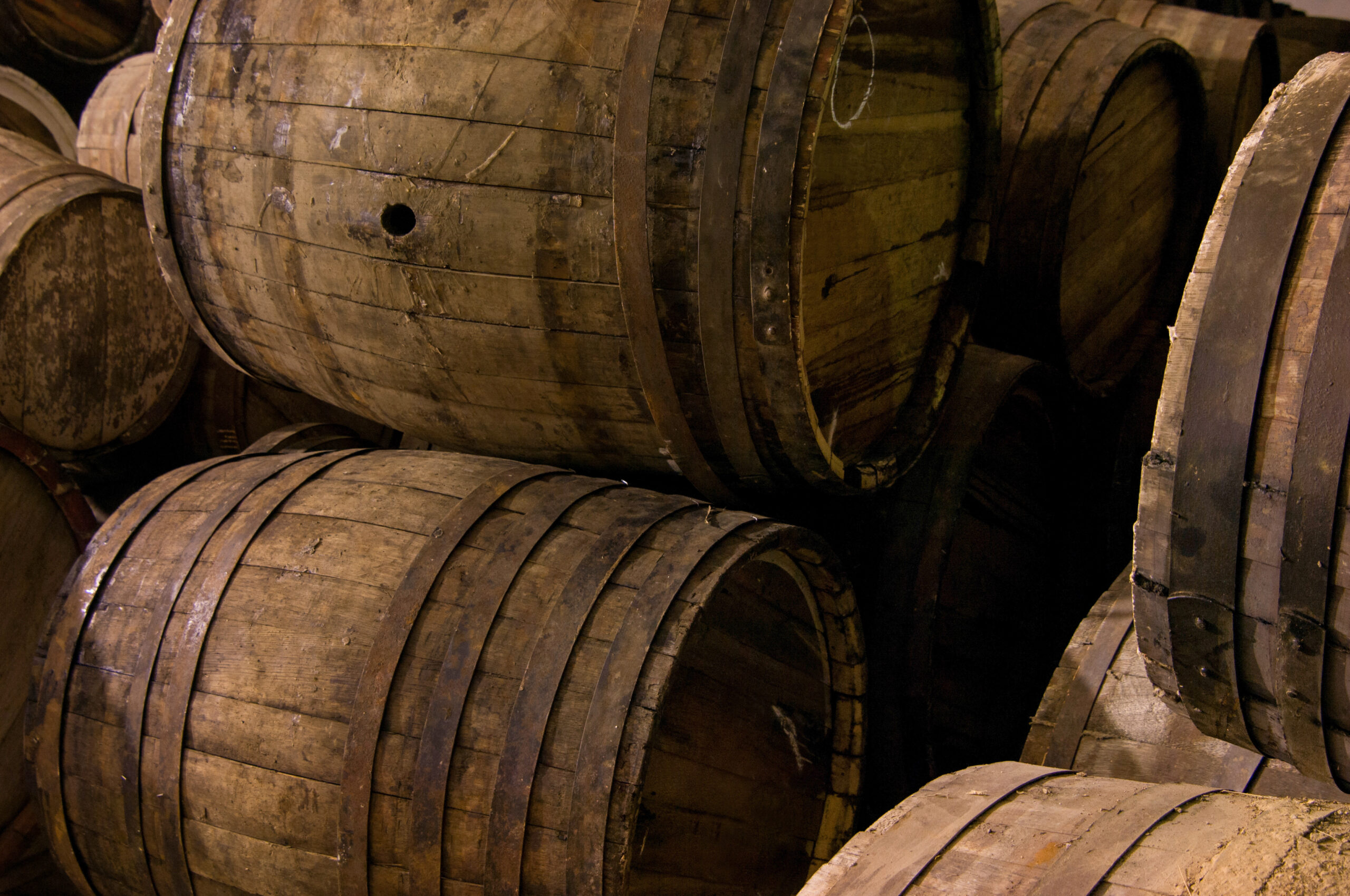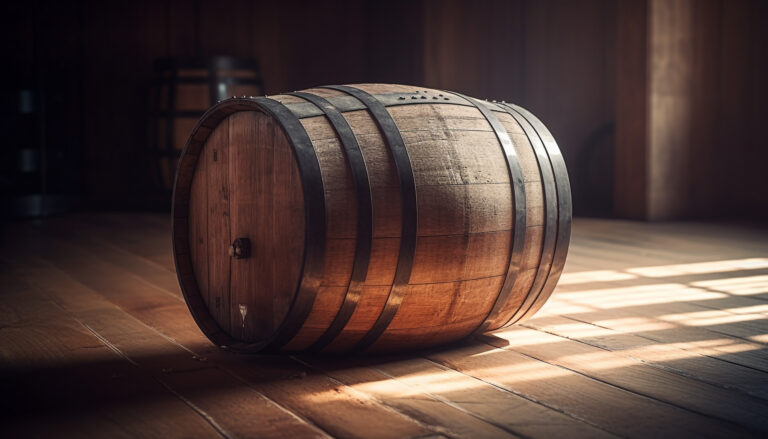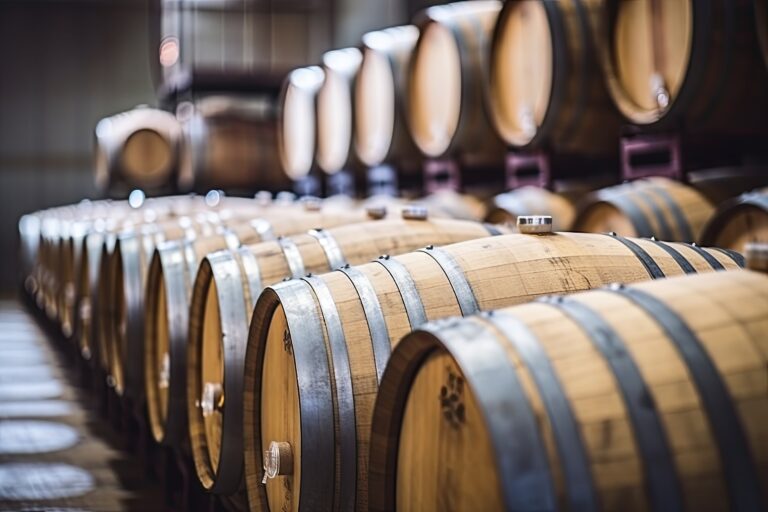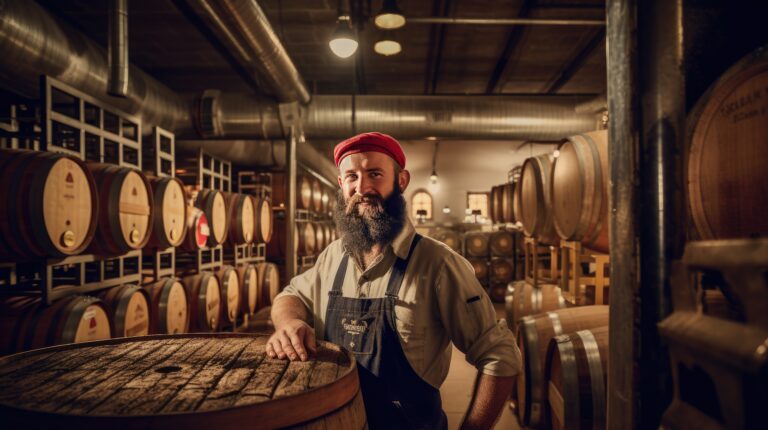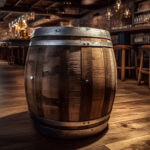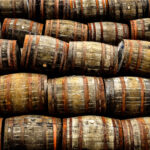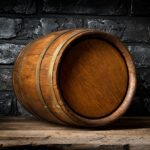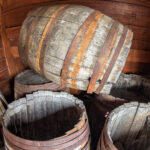Ever wondered about that “12 years aged” label on your whiskey bottle? It’s not just a number – it’s a story of craftsmanship and time. Whiskey aging is a fascinating blend of art and science, where charred oak barrels work their magic to transform raw spirit into liquid gold. But these barrels aren’t immortal. They have a lifespan, and understanding that lifespan is key to appreciating the whiskey in your glass.
Let’s dive into the world of whiskey barrels and discover how they shape the spirits we love. We’ll explore the barrel-making process, how long different whiskeys age, and the chemical reactions that give whiskey its distinct character. Get ready to impress your friends with some serious whiskey wisdom!
What Exactly Is a Whiskey Barrel?
A whiskey barrel is a charred oak container, the vessel where whiskey’s transformation takes place. It’s more than just storage; the barrel imparts color, flavor, and a whole lot of character. But how long can these barrels keep doing their job?
Barrel Longevity: The Short Story
Most whiskey barrels last for about 3 to 5 years. During that time, the whiskey draws out the oak’s flavors and aromas. Eventually, the barrel’s flavor-giving ability diminishes. To maintain consistent flavors, distilleries often replace a portion of their barrels each year.
- American oak barrels: Typically last 3-5 years, contributing sweet vanilla and coconut notes.
- European oak barrels: Can last longer, up to 8 years, and often impart spicy and dried fruit flavors.
- Previously used barrels: Barrels that once held wine or sherry tend to age whiskey faster because they’ve already given up some of their oaky goodness.
- Warehouse location: Temperature plays a role. Barrels in warmer areas age more quickly.
While barrels can be reused a few times, they eventually become “spent.” Some distilleries, however, are finding creative ways to repurpose these retired barrels, turning them into furniture or other decorative items. Aging whiskey is a delicate art, and distillers keep a close eye on their barrels to know when it’s time for a replacement.
The Aging Process: Flavor Development
Aging is where the magic happens. As whiskey rests in the charred oak barrels, a series of chemical reactions unfold:
- Evaporation: Some of the whiskey evaporates – the “angel’s share” – concentrating the remaining liquid’s flavor.
- Oxidation: Oxygen interacts with the whiskey, smoothing out the harshness and sometimes adding smoky notes.
- Extraction: The wood releases compounds like vanillin and lignin, contributing vanilla, caramel, and spice flavors. The longer the aging, the more extraction occurs.
- Blending: Whiskeys from different barrels are often blended to create the desired flavor profile. Master distillers carefully select and combine these barrels.
Different whiskeys have different aging requirements. Bourbon, for example, must be aged for at least two years, while Scotch whisky needs a minimum of three years. Premium whiskeys can be aged for decades to develop a rich, complex character.
Factors Affecting Barrel Lifespan
Several factors influence how long a whiskey barrel remains useful:
- Wood type: Oak, particularly American white oak, is the preferred choice and can last for many years. Softer woods aren’t as durable and can introduce unwanted flavors.
- Toasting and charring: The level of toasting or charring affects how long the barrel lasts. More intense charring can actually help preserve the wood.
- Storage environment: Consistent temperature and humidity are essential. Fluctuations can shorten a barrel’s lifespan.
- Distillate type: The type of spirit being aged matters too. Higher-alcohol spirits, like bourbon, can contribute to a longer barrel life.
Reusing Barrels: How Many Times?
Barrels can be reused, but their flavoring power diminishes with each use. Distillers typically get two or three uses before the barrel starts to impart undesirable flavors. Re-charring or inserting new wood staves can extend a barrel’s life. Some distilleries use a barrel for different spirits over time, creating interesting flavor combinations. While a barrel’s primary job is aging spirits, its life doesn’t end there. Used barrels find new purposes in craft distilling, homebrewing, and even smoking food.
Lifespan of Different Barrel Types
Barrel lifespan varies depending on the wood and size:
- American white oak: The king of whiskey barrels, known for its longevity (up to 100 years!) and its contribution of vanilla, caramel, and spice notes.
- European oak: More porous than American oak, leading to quicker aging and a shorter lifespan (3-10 years). It often imparts dried fruit, nut, and clove flavors.
- Charred vs. toasted: Charred barrels tend to age whiskey faster than toasted barrels.
Barrel Maintenance: Extending Their Life
Proper care can maximize a barrel’s lifespan:
- Regular inspection: Check for leaks, cracks, and structural soundness.
- Environmental control: Store barrels in a cool, dark, and humid environment.
- Periodic rotation: Rotate the barrels to prevent uneven drying.
- Timely emptying and refilling: Know when a barrel has given its all and needs to be retired.
Retiring a Barrel: Knowing When It’s Time
Knowing when to retire a barrel is crucial:
- Volume loss: Excessive evaporation (the angel’s share) can signal it’s time for retirement.
- Flavor changes: If the whiskey starts to taste bland or the barrel no longer contributes desirable flavors, it’s time for a change.
- Off-putting smells: Musty or moldy odors are a clear sign of trouble.
- Leaks: Significant leaks mean the barrel can no longer do its job.
Innovations in Barrel Technology
Distilleries are constantly exploring new ways to use barrels:
- Toasting and charring variations: Different levels of toasting and charring create a wide range of flavors.
- Alternative woods: Woods like chestnut and hickory are being used to add unique flavor profiles.
- Smaller barrels: Smaller barrels accelerate aging, but can also lead to less balanced flavors.
- Barrel finishes: Finishing whiskey in barrels that previously held other spirits, like port or sherry, adds extra layers of complexity.
Common Whiskey Barrel Questions
- How long do whiskey barrels last? Typically 3-5 years, but sometimes up to 10 years.
- Do barrels impart less flavor over time? Yes, their flavoring power diminishes with each use.
- Can used barrels be refilled? Yes, several times, but with decreasing effectiveness.
- Do all whiskeys use the same type of barrels? No, different whiskeys have specific barrel requirements.
Final Thoughts
The journey of whiskey from raw spirit to a smooth, flavorful drink is deeply intertwined with the life of the barrel. Understanding the aging process and the factors that influence it adds another dimension to enjoying your favorite dram. Next time you raise a glass, take a moment to appreciate the craftsmanship and time that went into creating the spirit, from the careful selection of the wood to the patient aging in the barrel.
